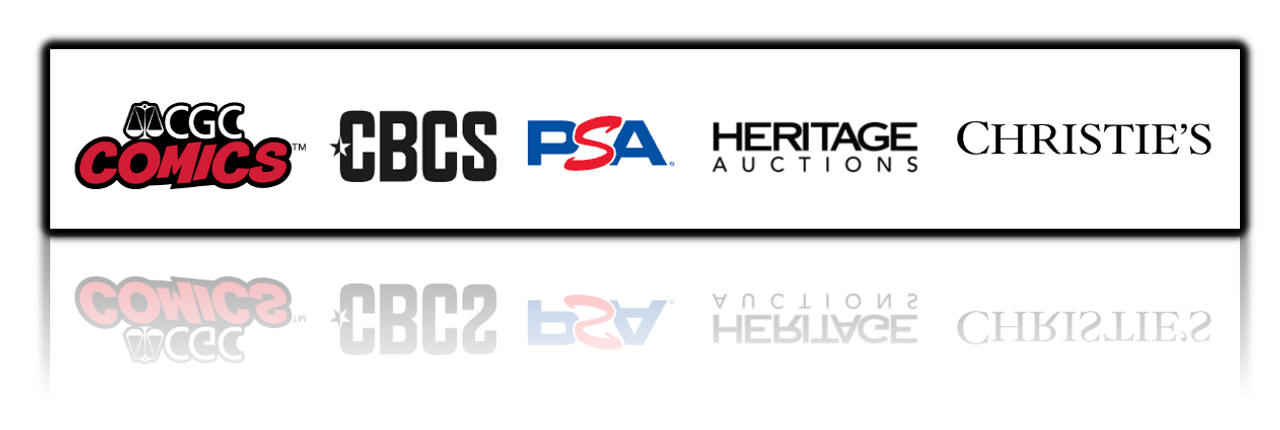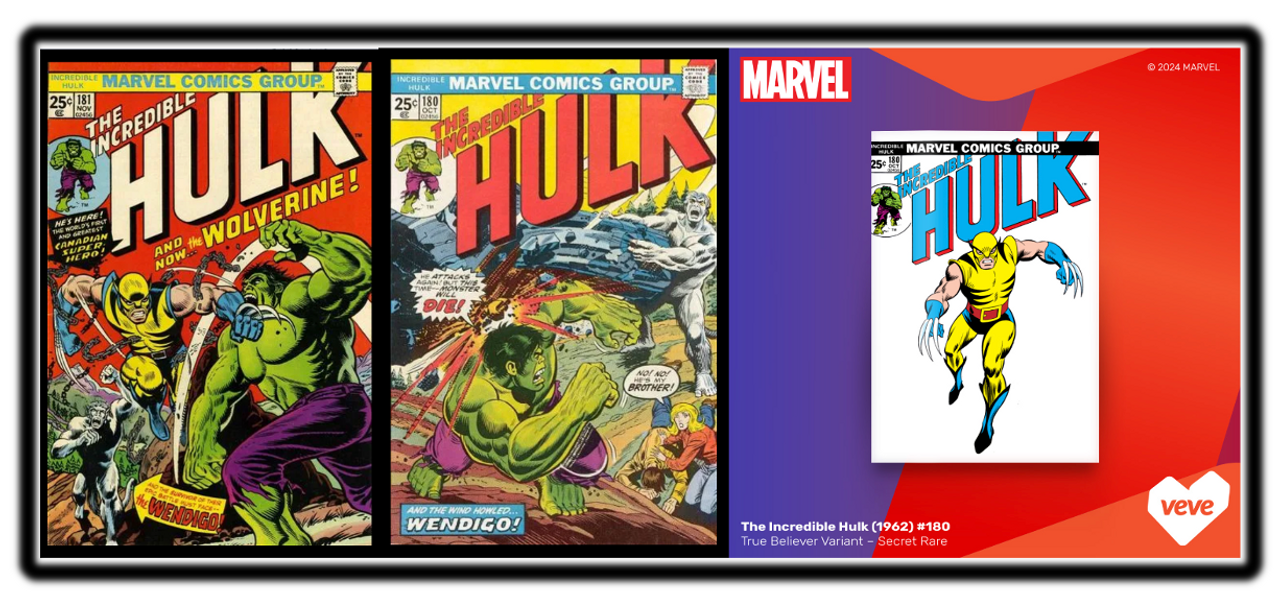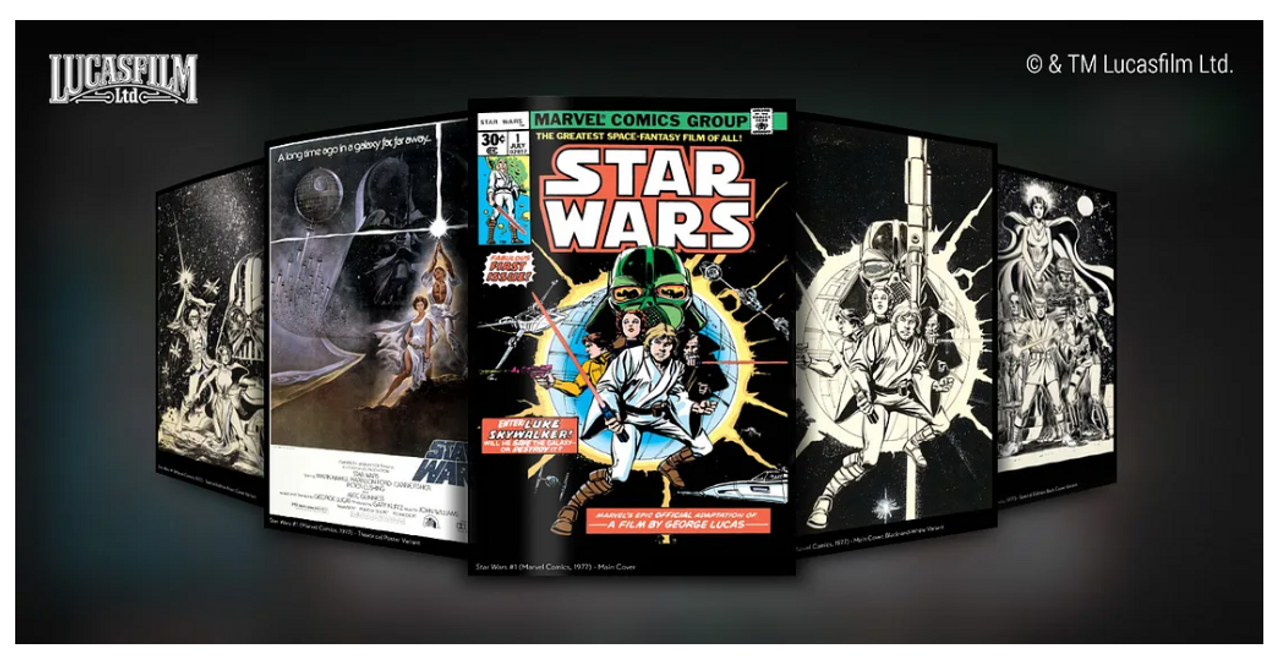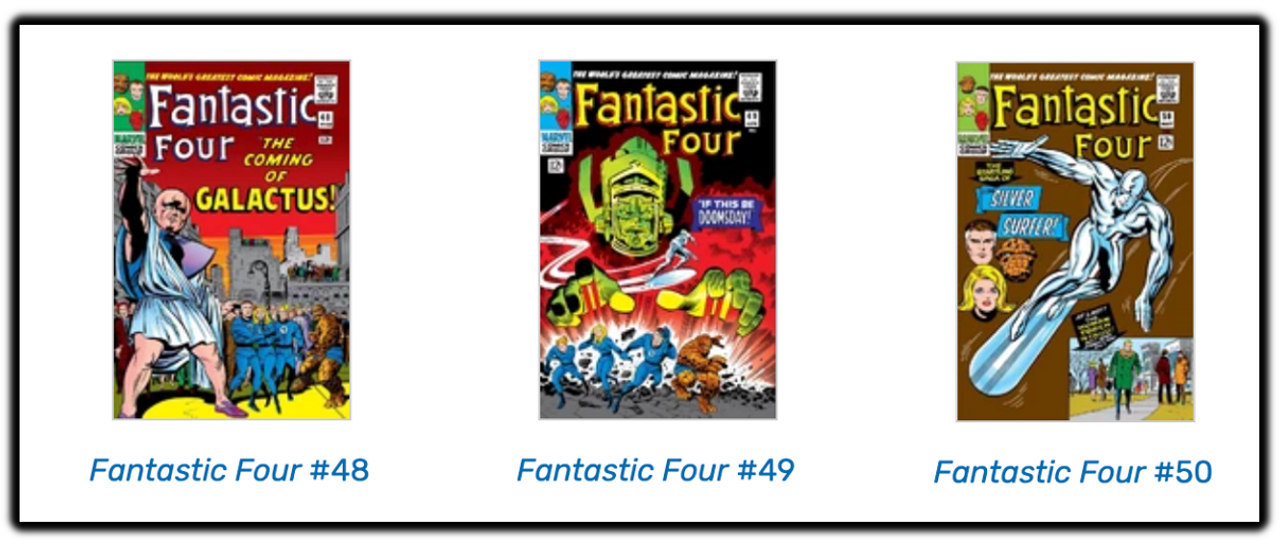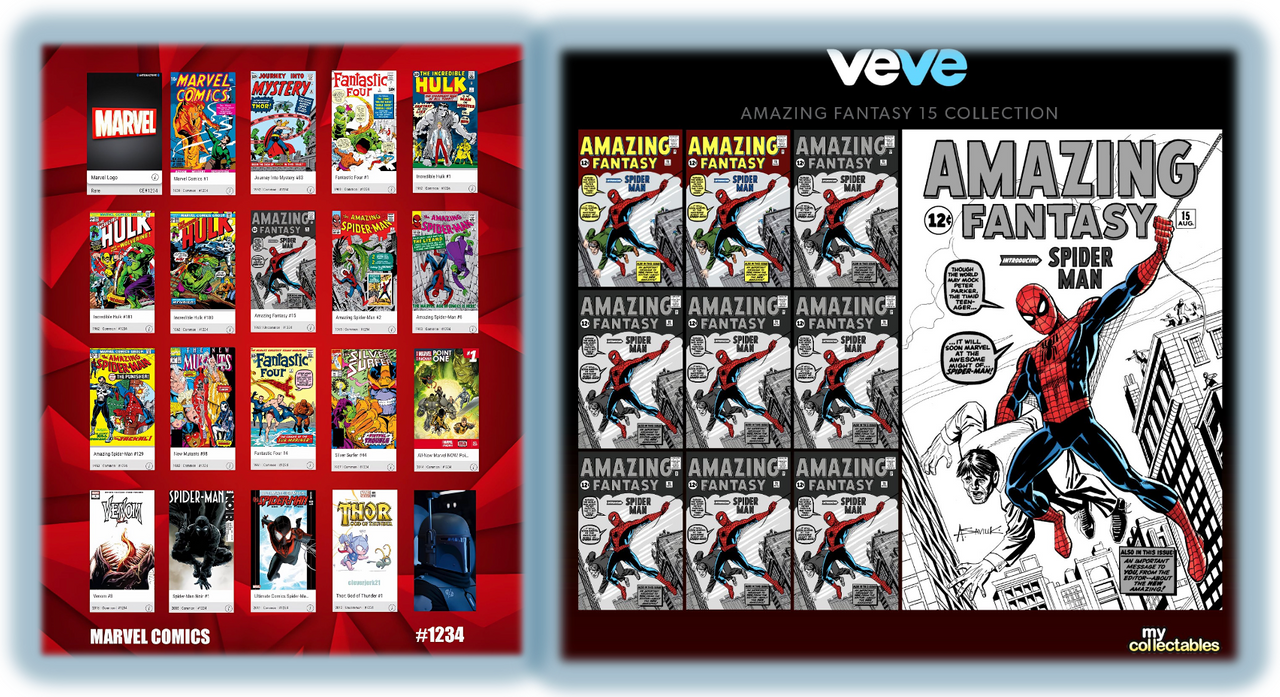Your Ultimate (Digital) Beginner’s Guide to Comic Collecting Terms
If you're new to comic collecting or investing (physical or digital), it does come with its own language, but don’t worry! Whether you’re buying your first comic at a store or online with VeVe or DC Digital Collectibles, and the terms have you spinning, this list is for you.
Below is an easy guide to some of the most important terms every new comic collector should know entering your collectible experience, be it for fun, the art, the stacking or investing, knowing some of the key lingos will definitely help up your game.
Many of these terms are also important for comic collectors as they are part of the physical grading process or selling features that effect pricing or desirability. To further the research, be sure to check out or add some of the following to your favourites:
- GRADING SITES: CGC, CBCS or PSA
- AUCTION SITES: HERITAGE or CHRISTIES
- GRADED SALES TRACKING: GOCOLLECT (OF COURSE!)
- FANDOM SITES: MARVEL DATABASE | FANDOM or DC DATABASE | FANDOM
With the rapid evolution of digital comic collectibles, many of these same terms are already having major impact on scarcity as buyers grab up key digital issues and mint numbers from their marketplaces, further impacting resale prices.
Be sure to add GoCollect to your Favourites list, which tracks physical (graded) sales of key comics to help understand market moves and activity, along with historical sales information that will give some insight to future potential.
Sites like eBay, ComicConnect & MyComicShop also help with understanding features, trends & provide helpful sales aids for buying & selling, while a plethora of online help exists from YouTube content creators like Comics & Crypto, Swagglehaus & Comicstorian to offer additional fun & insights. Check out SCREENRANTS 10 Best YouTube Channels for Comics if you want to dig further!
THE TERMINOLOGY!
Character First Appearance
This refers to the very first time a character shows up in a comic. It’s a big deal for collectors because first appearances often become legendary, Example: THOR first appeared in Journey Into Mystery #83. IE - The comic title ran 83 issues until Thor first appeared.
Character Cameo Appearance
A brief, often one-panel appearance of a character before their full debut. Example: Wolverine's cameo came in HULK #180, as the last panel in that comic. His first full appearance was then introduced in Hulk #181, although debate has raged endlessly on which of these two books carries the greater significance!
Character Origin Story
The tale of how a character became who they are—usually their powers, motivations, or backstory.
Example: Spider-Man’s origin in Amazing Fantasy #15 tells how Peter Parker gained his powers and became a hero. This of course, led to the wildly successful Amazing Spider-Man run we've enjoyed since 1963!
First Comic Edition
The very first version of a comic ever published. Highly prized by collectors. Example: Action Comics #1 is the first edition and holy grail for Superman fans, where Marvel Comics #1 led the start of the Marvel brand from its prior Timely Comics namesake, or Fantastic Four #1, launching Marvel's era of superhero teams.
Print Number or Run
How many copies of a comic were produced during a specific release. A lower print run often means higher rarity, however this also has impact based on how many copies remain today. IE: A limited run of 500 issues is much rarer than a print run of 50,000, although consider again Marvel Comics #1 - 880,000 were originally printed back in 1939, however less than 70 are found as graded copies today. Very scarce, from an originally massive print run.
Series
A group of comics telling an ongoing story, usually numbered sequentially. Example: X-Men Vol. 1 spans hundreds of issues, though there can be 'series' found within a comic line, such as X-Men's "The Phoenix Saga," which ran from issues #101 through #108.
First Printing (2nd, 3rd, etc.)
The original release is the first printing, while later reprints are marked as 2nd, 3rd, and so on. Example: First printings are often more valuable than later ones, or can be more scarce. Back to Marvel Comics #1, the first printing in August 1939 ran 80,000 issues that sold out quickly, so an additional 800,000 were then printed in November 1939. More recently, X-Men '97 #1 sold out almost instantly (< 20 minutes to sell out all 1000 mints on the VeVe Comics site) so additional print runs were quickly ordered to meet demand.
Reprints
Newer printings of older comics, often with updated covers or colors. Example: Marvel’s True Believers line offers affordable reprints of classic stories that helped bring new fans up to speed on certain characters or stories prior to the 2015 Secret Wars event.
Restored Comics / Restoration
When comics are repaired or altered to improve their condition. Collectors often prefer unrestored copies for higher value. Example: A restored Detective Comics #27 may have repainted colors or repaired tears.
Slab or Slabbing
Sealing a comic in a protective case with a grade from companies like CGC or CBCS. It’s perfect for preserving and showcasing rare books. Example: A “slabbed” Amazing Spider-Man #300 is both protected and graded.
Classic Cover
Iconic artwork that becomes as memorable as the story itself. Example: Todd McFarlane’s Spider-Man #1 (Torrent Series) has definitely been a fan favorite, having almost 17,000 copies graded and one 9.9 selling in 2023 for $5,000.
Cover Variant
Alternate covers created for the same comic issue, often limited or themed. Example: Star Wars #1 had multiple variant covers featuring different characters, where VeVe took that a step further, having Marvel & LucasFilm artists curate custom digital collectible designs specifically for the app. (VeVe continues to work directly with Marvel artists who create exclusive digital cover variants unavailable physical formats or off the VeVe platform, like their first rare & ultra rare Fantastic Four #13 variants).
Grading Systems & Formats
Grading evaluates a comic’s condition (e.g., “Mint” is a perfect 10, which would be completely flawless in its condition). Formats include floppy comics, trade paperbacks, or digital editions. Example: A CGC 9.8 graded comic is highly sought after, where the further down the grading scale you go, typically the less pricey a book becomes (although in some cases, the highest grade ever received may be lower if the book is scarce / few remain in pristine condition - Ex: GoCollect WHIZ COMICS #2, FA Captain Marvel).
Issue vs Issue Number
“Issue” refers to a single comic, while “issue number” tells you its place in a series. Example: X-Men #1 is the first issue of the series.
Edition Number vs Mint Number
Edition relates to printings, while mint number applies to digital 'minting' like VeVe or NFT collectibles, often defining its rarity.
Age / Era
Comics are categorized by the time period they were published:
- Golden Age (1938–1956)
- Silver Age (1956–1970)
- Bronze Age (1970–1985)
- Copper Age (1985–2000)
- Modern Age (2000–present).
Genre
The theme of a comic: superhero, sci-fi, horror, or war. Example: The Walking Dead is horror, while The Avengers is superhero.
Story Arc
A multi-issue storyline that connects and concludes. Example: The Fantastic Four Issues #48 - $50 introduces GALACTUS.
Annual
A special oversized issue released once a year, often self-contained. Example: Batman Annual #1.
Graphic Novel
A standalone comic book, often longer & more detailed. EX: Watchmen was originally serialized but is now sold as a graphic novel.
Grail
Either a comic every collector dreams of owning, or one you dream of owning. Example: Amazing Fantasy #15 is a Spider-Man grail for many, but these are highly subjective. The term is one of the most overused in comic collecting, and has seen a resurgence with the advent of digital collectible comics. Although the 'everyone wants it factor' is alive & well, digital grails are those quickly surging to very high valuations or lower scarcity, but with immense popularity, particularly when it comes to special mint numbers or very exclusive variant covers like ultra or secret rares.
Comic Key
An issue of high significance, like a first appearance or major plot event. Example: Giant-Size X-Men #1 introduced a new X-Men team in May '75, which also saw Wolverine join, making the book very popular.
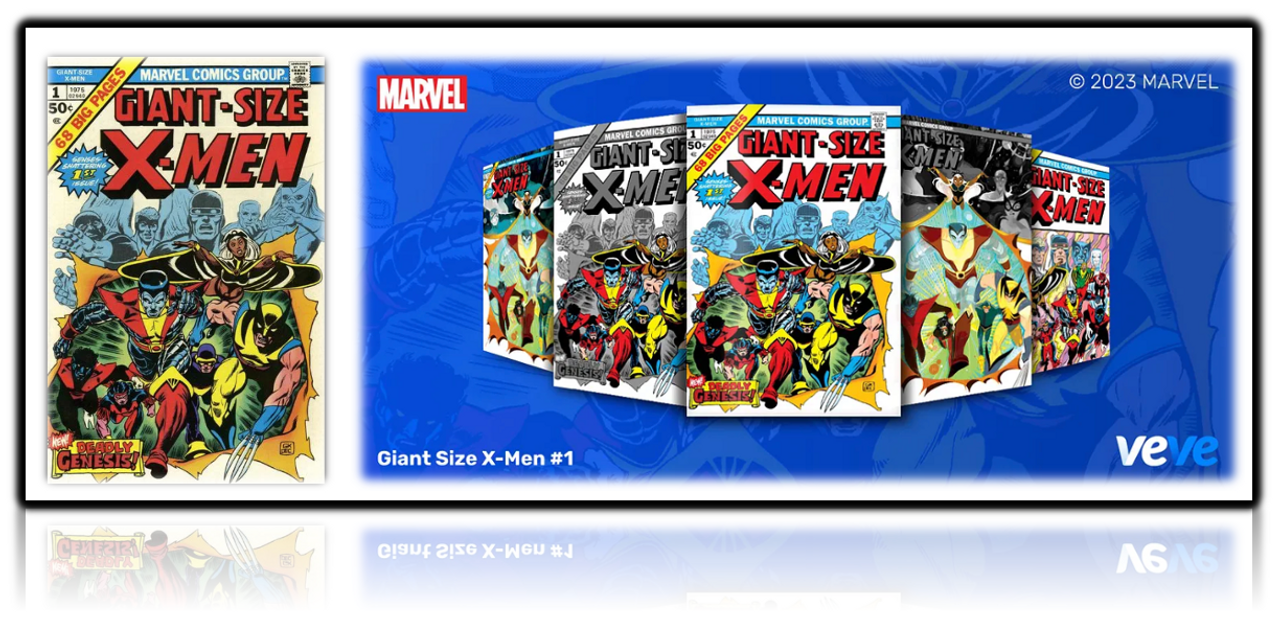
STACKING
These days, the term stacking more often applies to digital collectibles, although there are indeed many physical collectors who hold more than one copy of any item.
As digital assets are so new, many collectors or comic fans are not even aware of the space's growth or what 'digital ownership' even means, while speculative investors are stacking up many multiple copies of digital comics (and collectibles) as fast as they can, believing we are at a pivotal moment of being able to purchase "digital firsts." Plus, there will very likely come a time when more mass audiences will begin to recognize this, and participate.
Like any limited asset (BITCOIN ring a bell?), more buyers & holders will increase scarcity, but for those with multiples, it could open opportunities to sell off some of those stacks for potential gains to apply to other assets. "THE RULE OF THREE" as VeVe's CEO David Yu & veteran collector once coined..."One to sell, one to trade, one to HODL".
In the image above, we see Digital Master Collector CleverJerk's STACK of Fancy '1234' Mint Numbers, beside former physical collector-store owner-turned digital collectible superfan (now VeVe's Community Manager), MyCollectable's STACK of VeVe AF15s!
This should help set you up to start building your comic collection with confidence. Happy collecting...
TERMS REFERENCE: https://covrprice.com/cp-content/2023/08/glossary-common-comic-terms/
GRADED COMIC REFERENCE GUIDE: https://www.GoCollect.com
Thanks for Reading!

